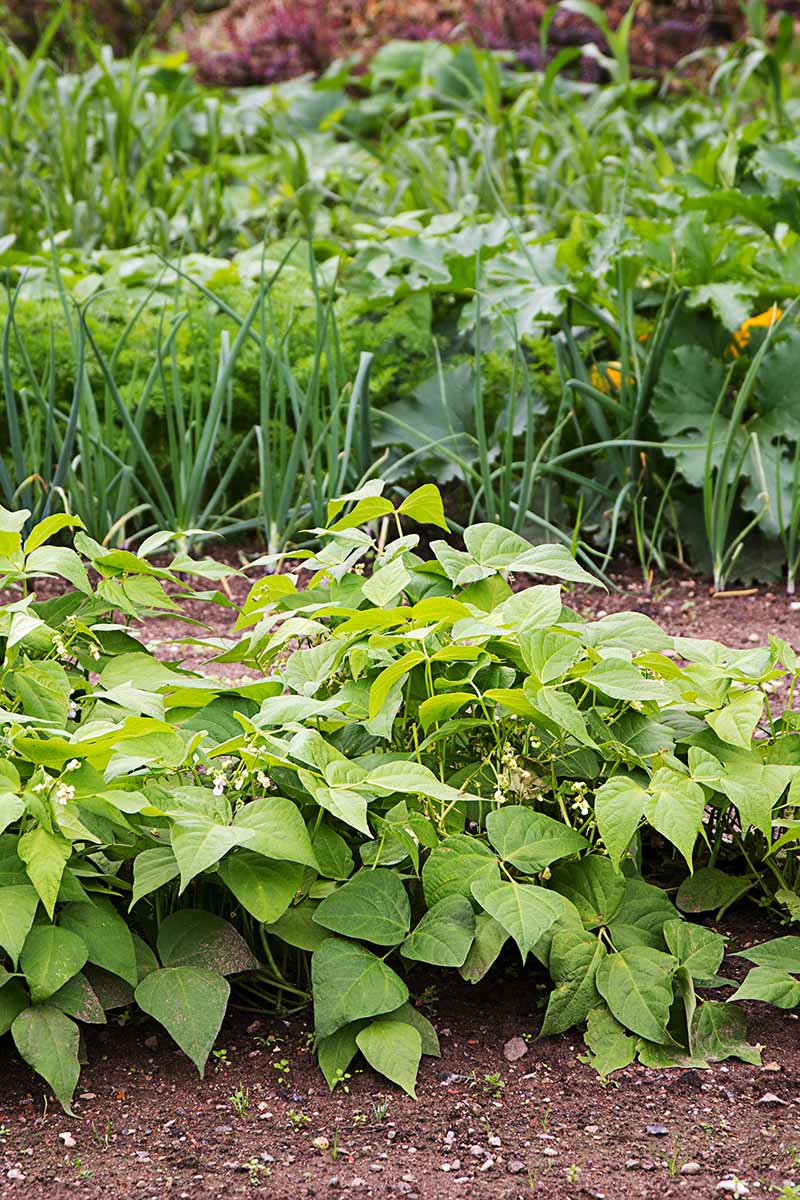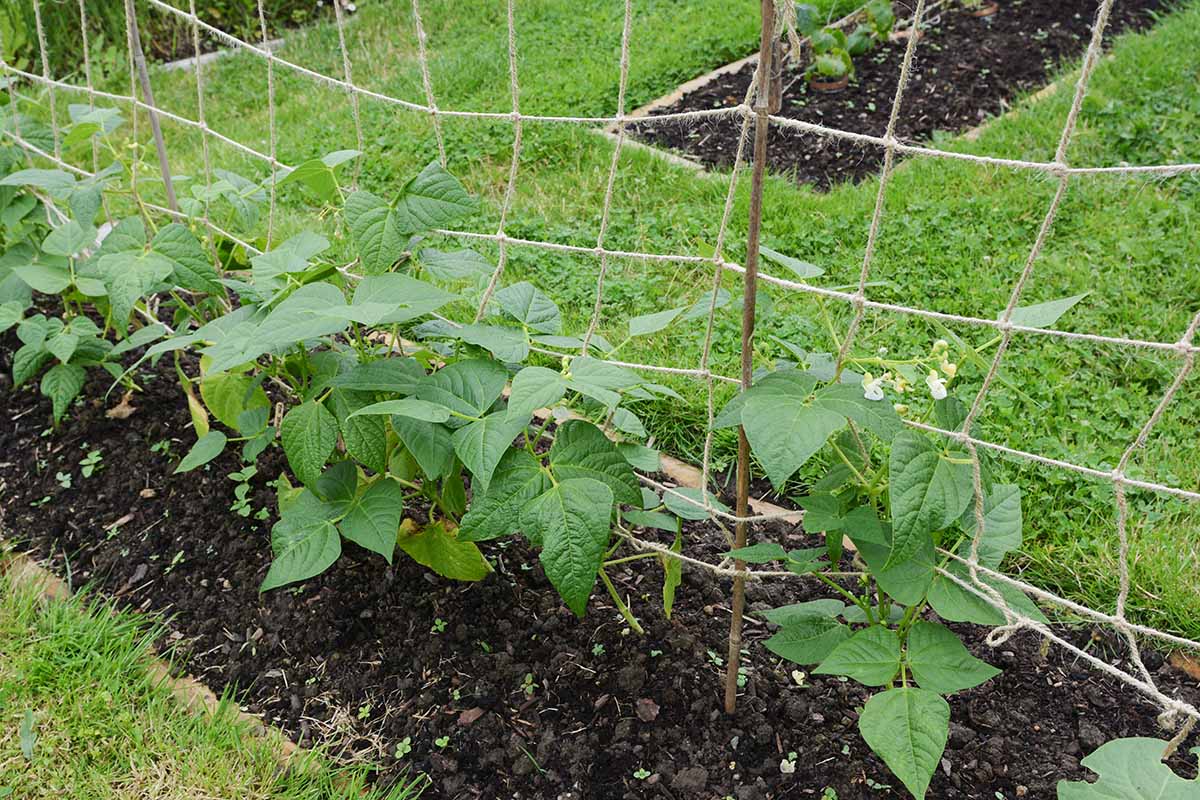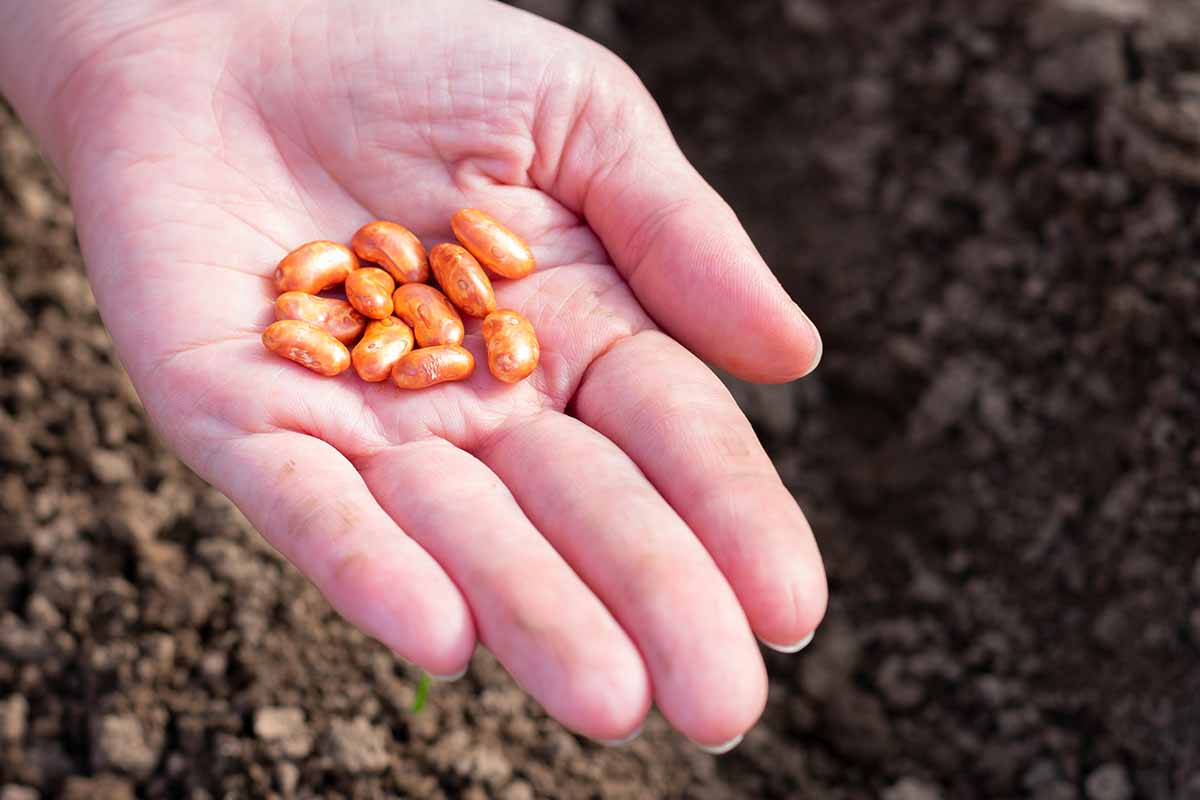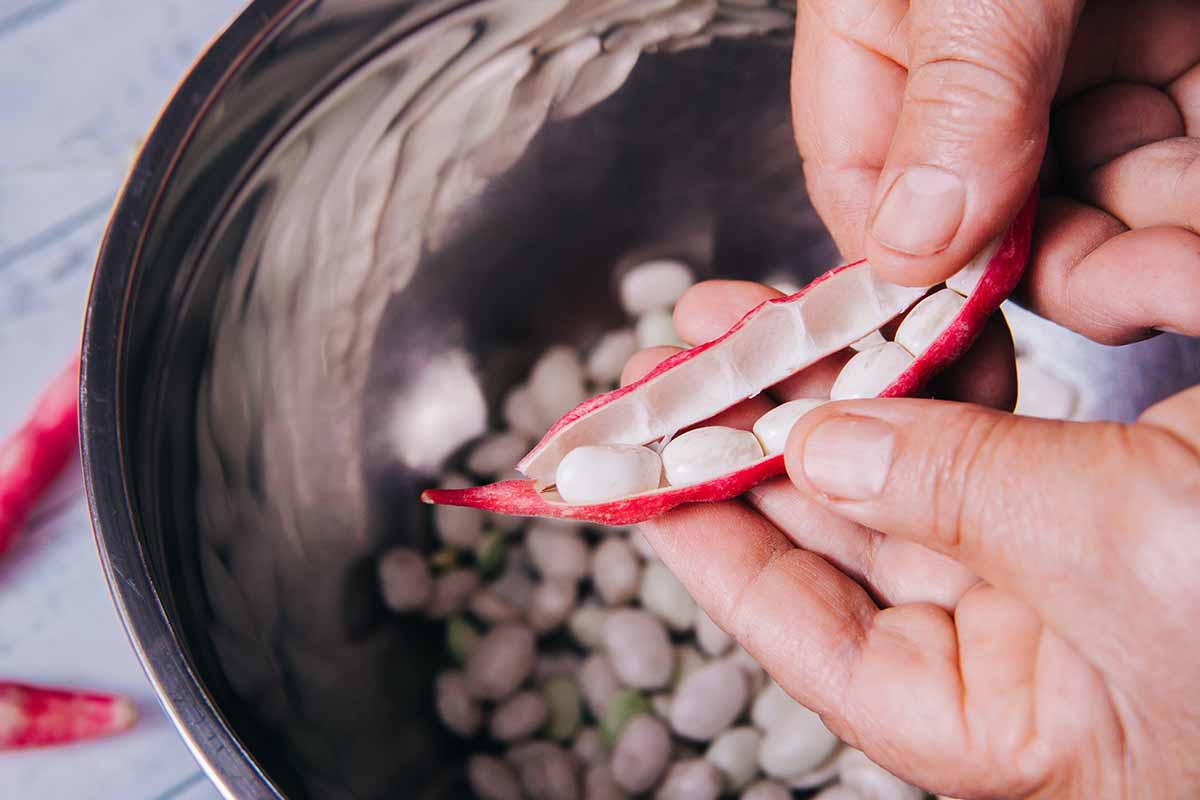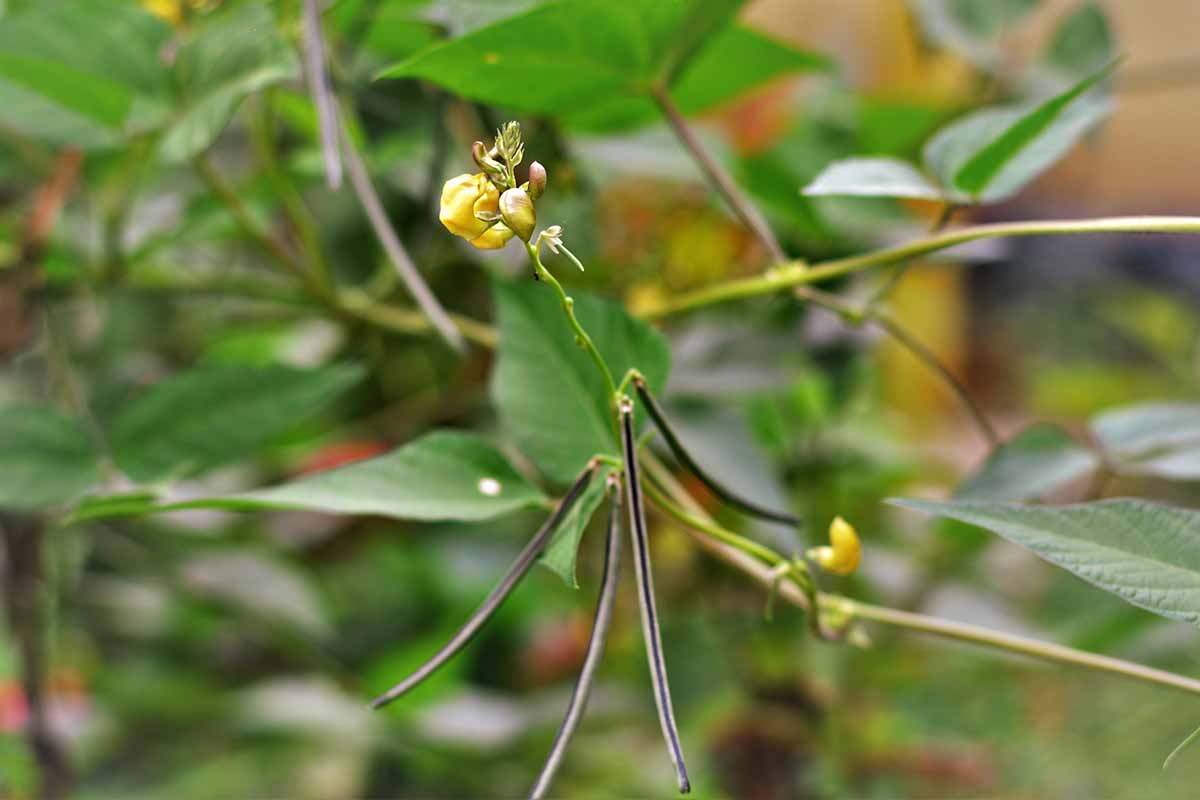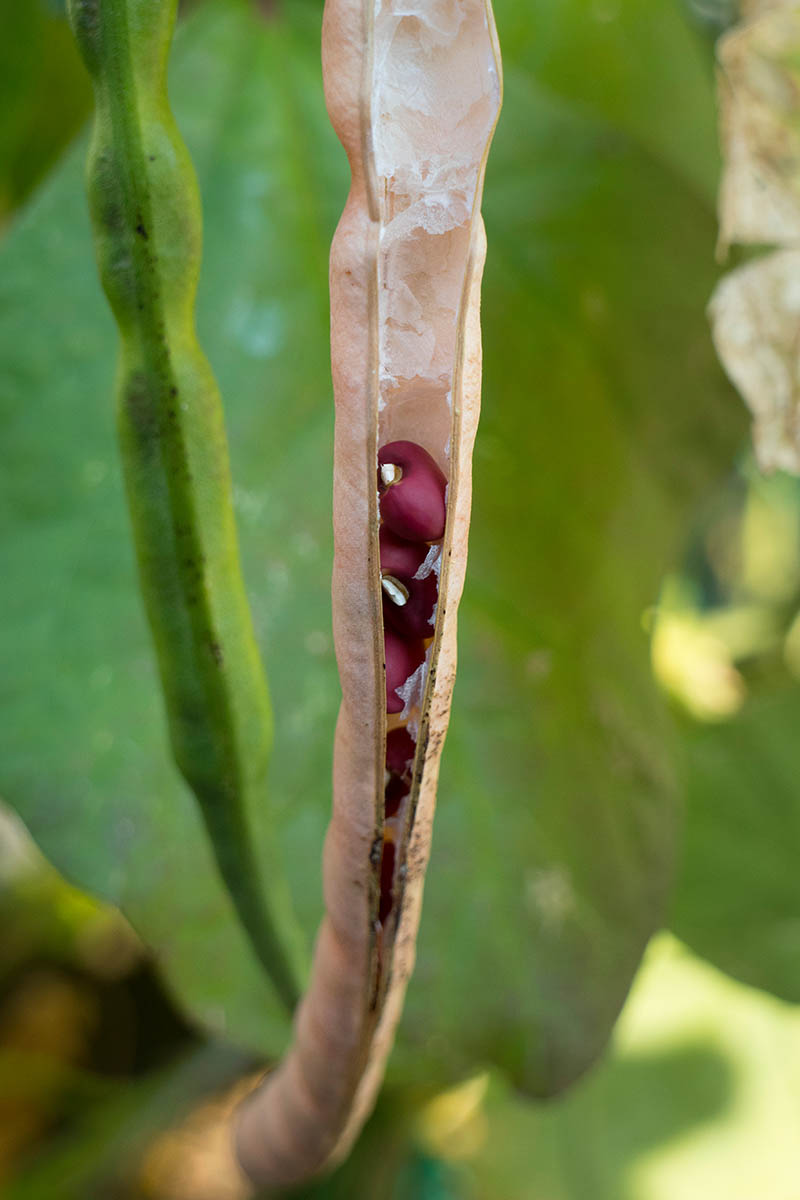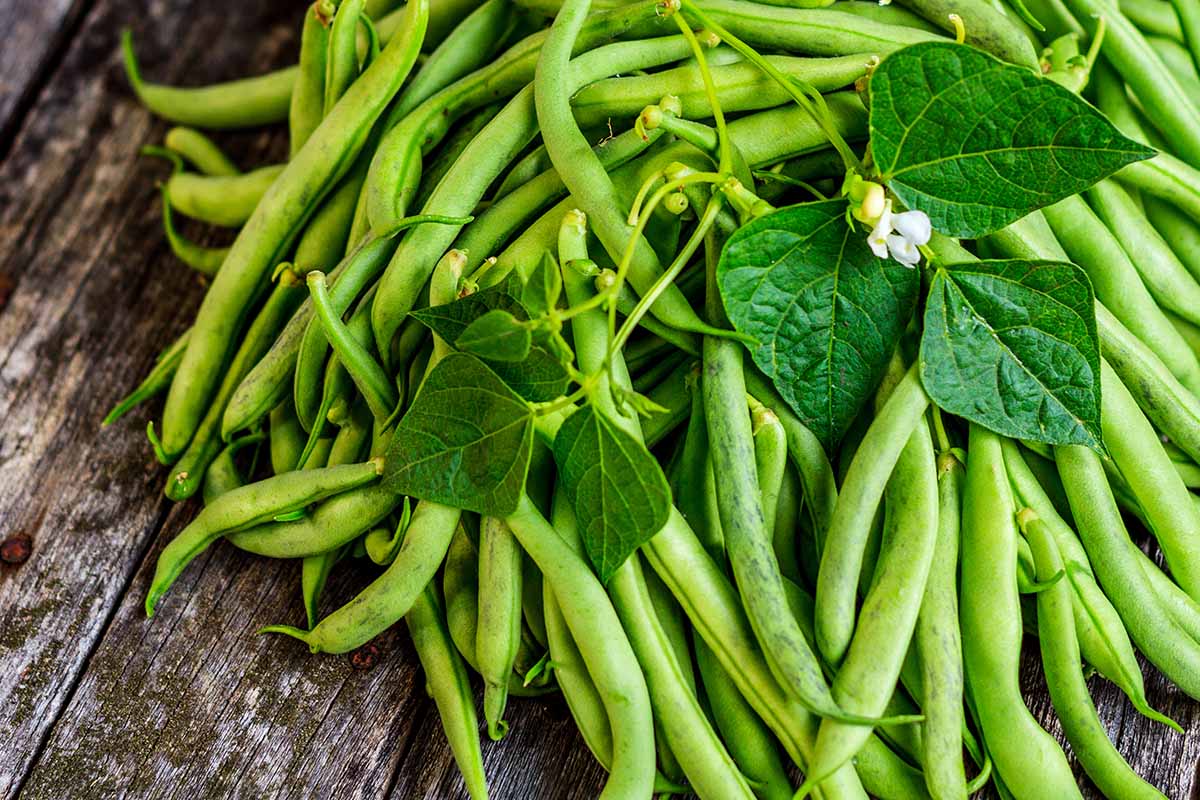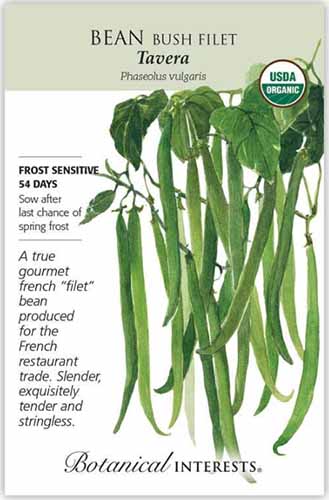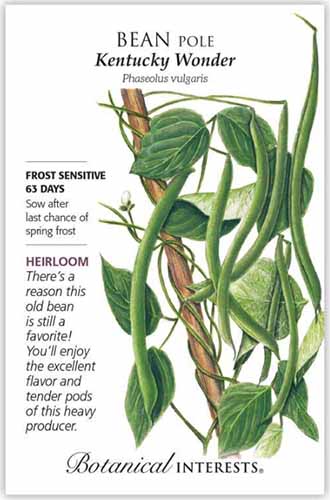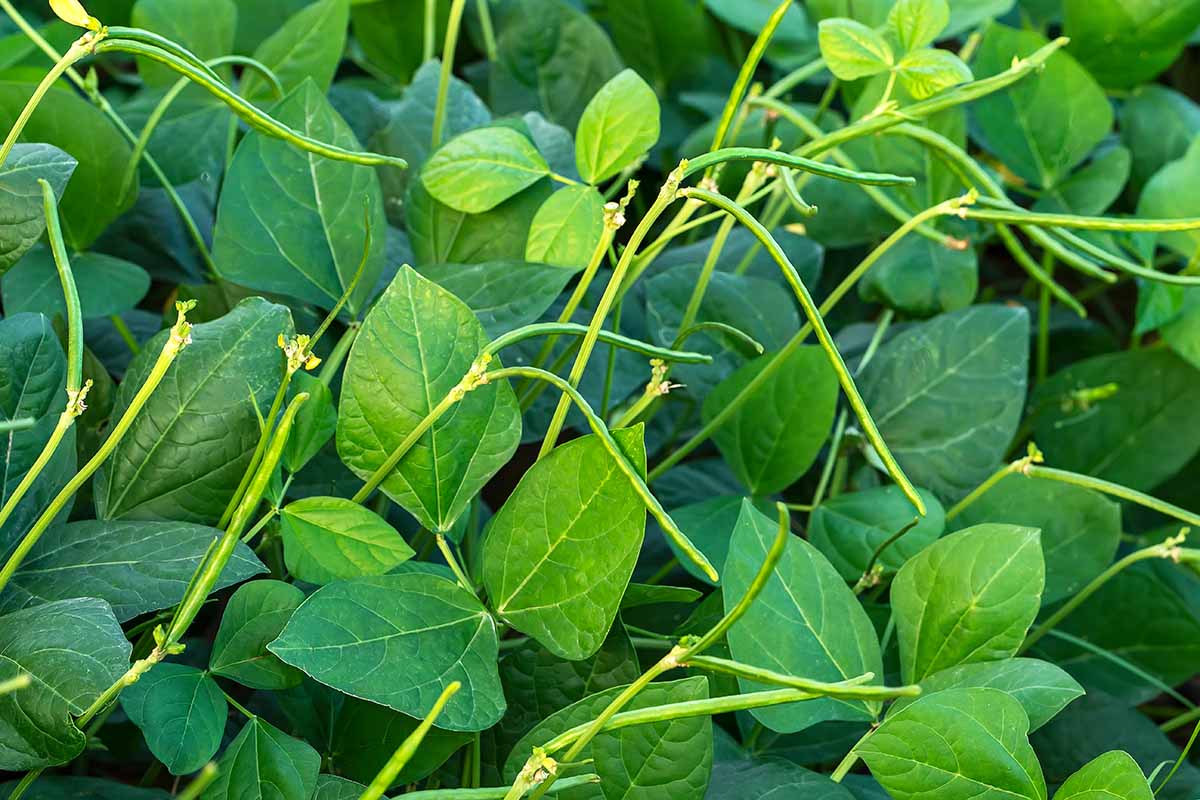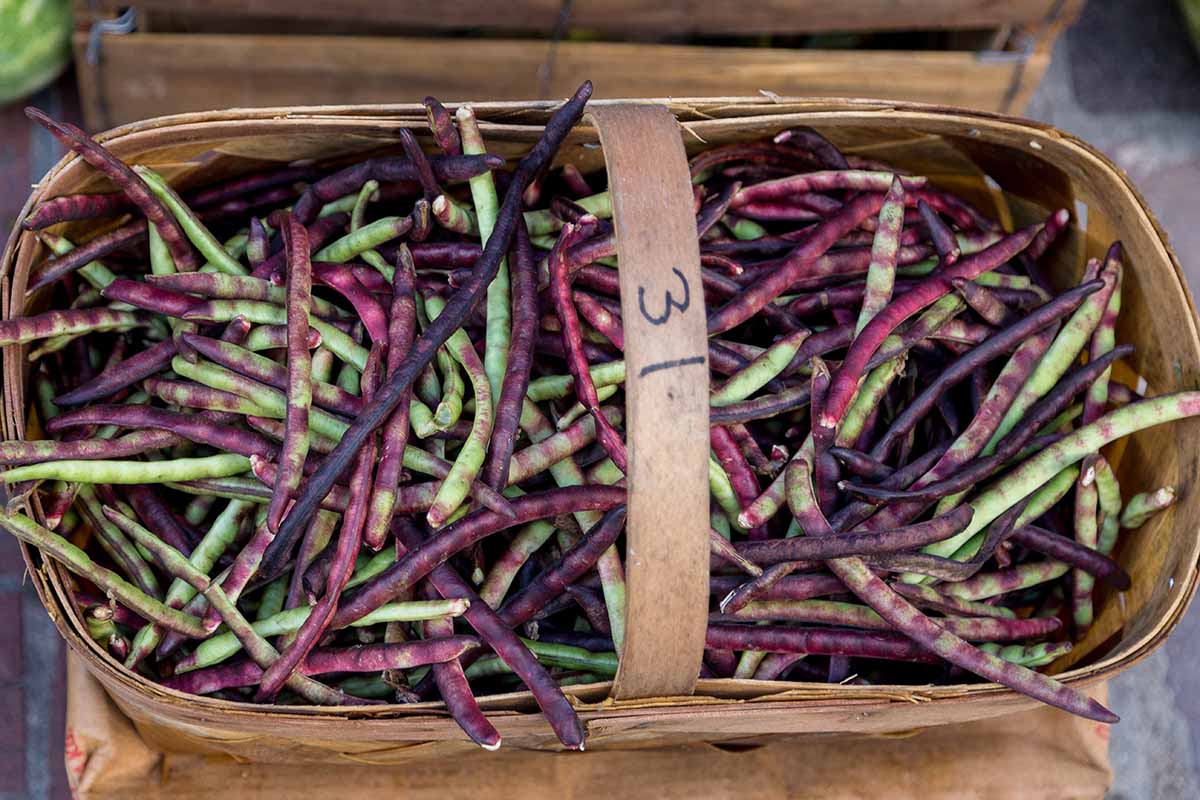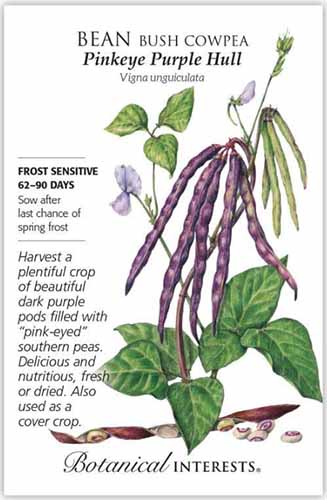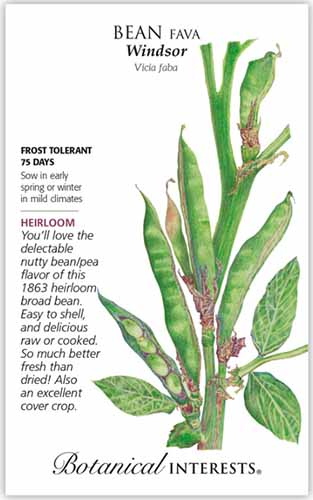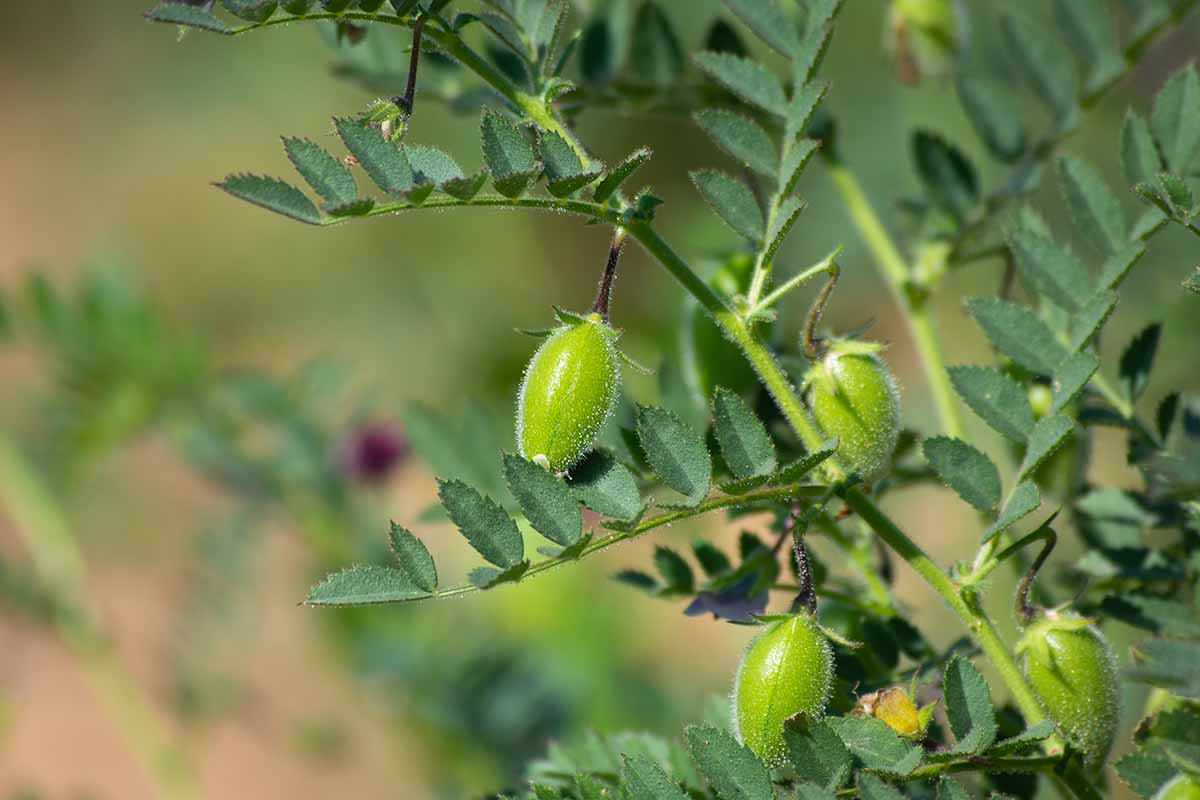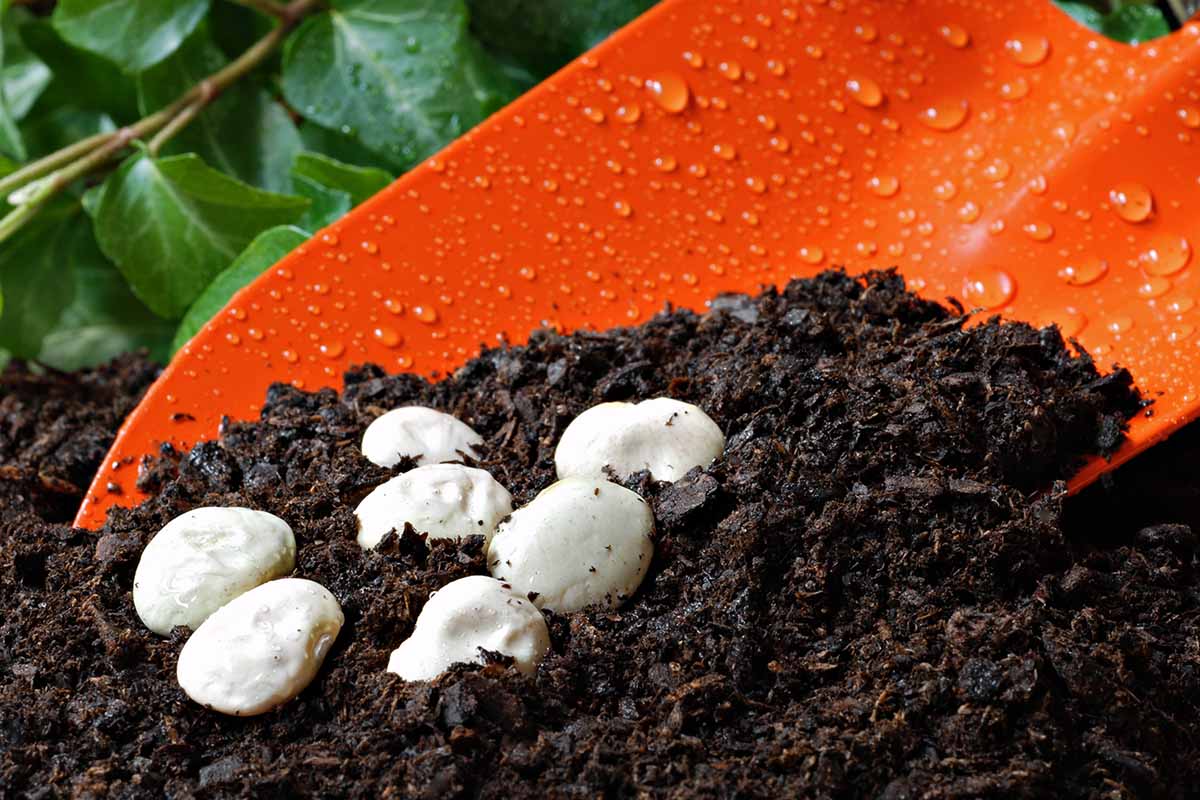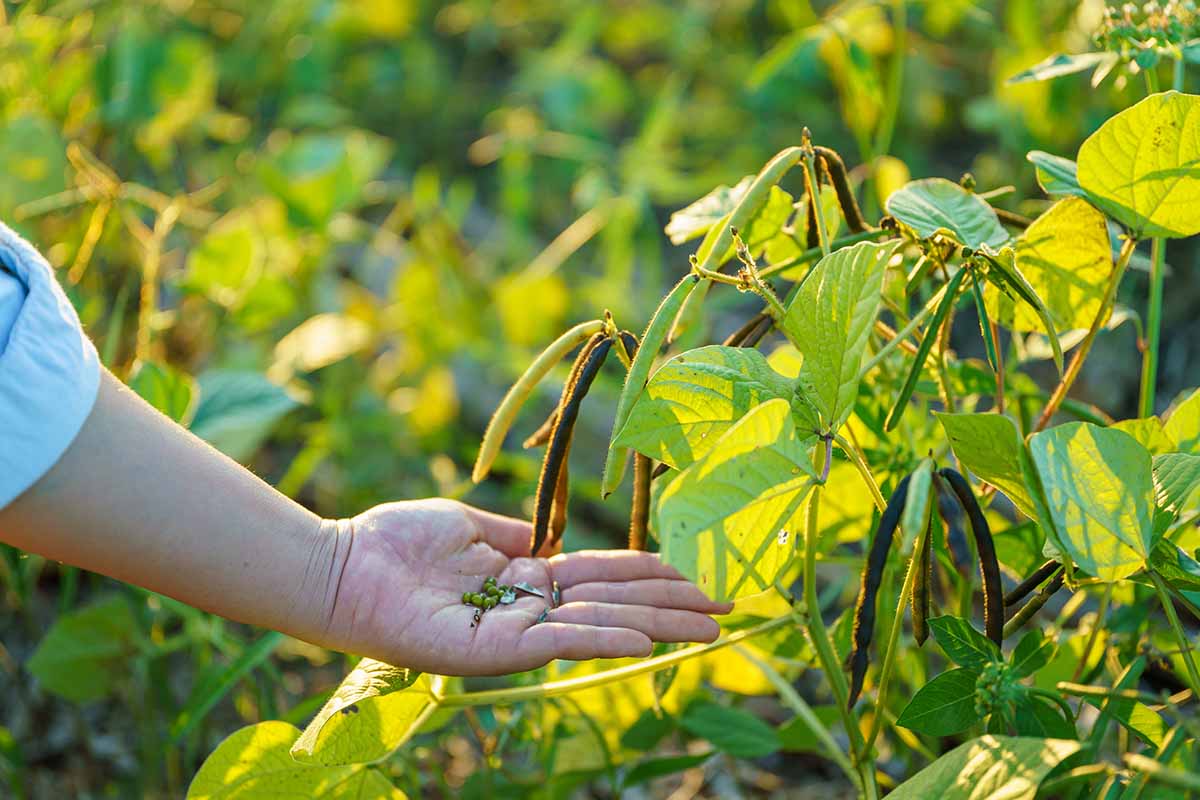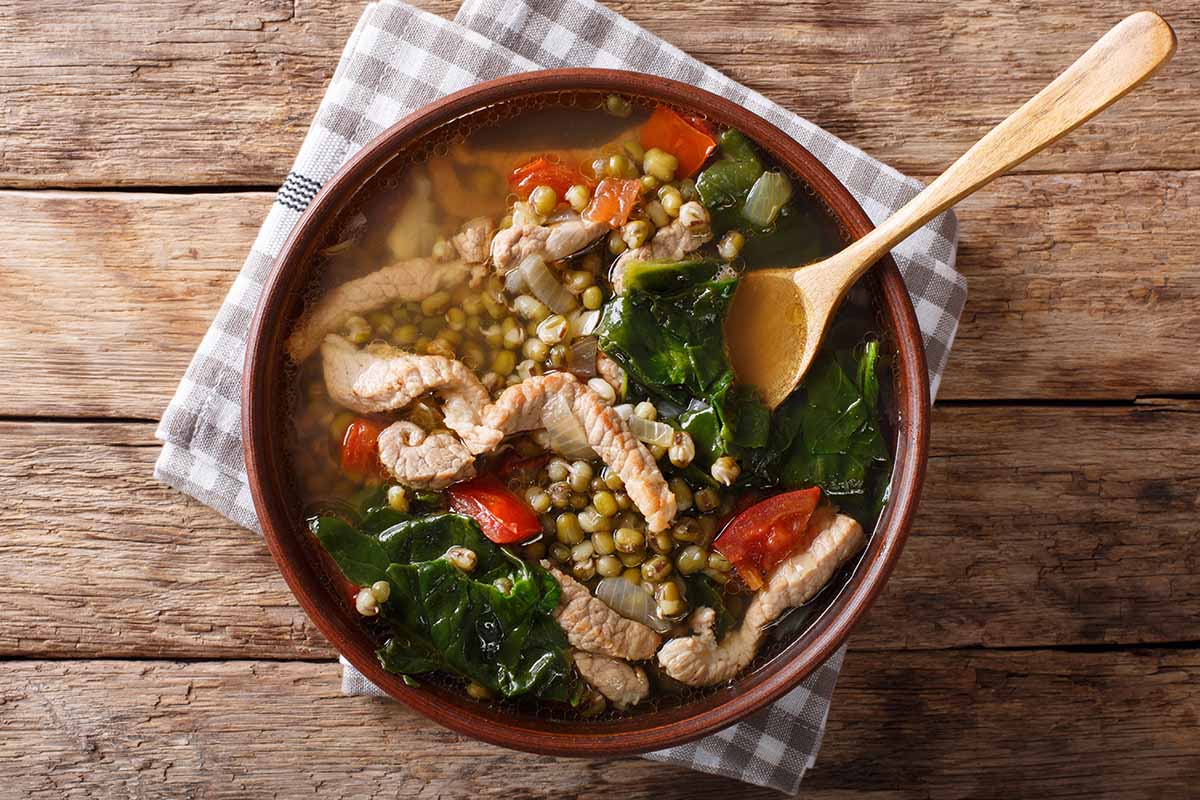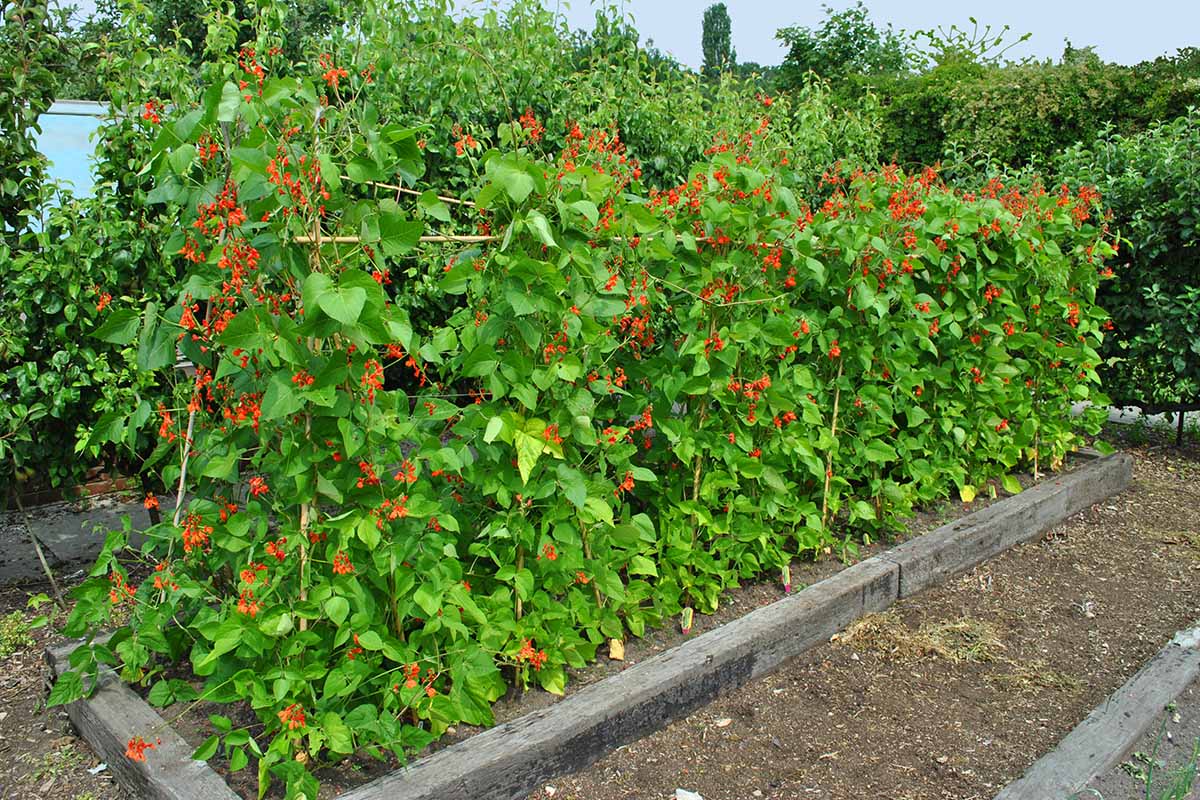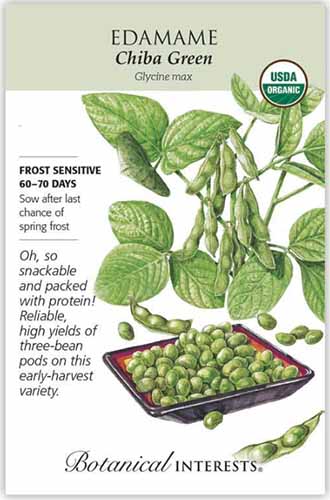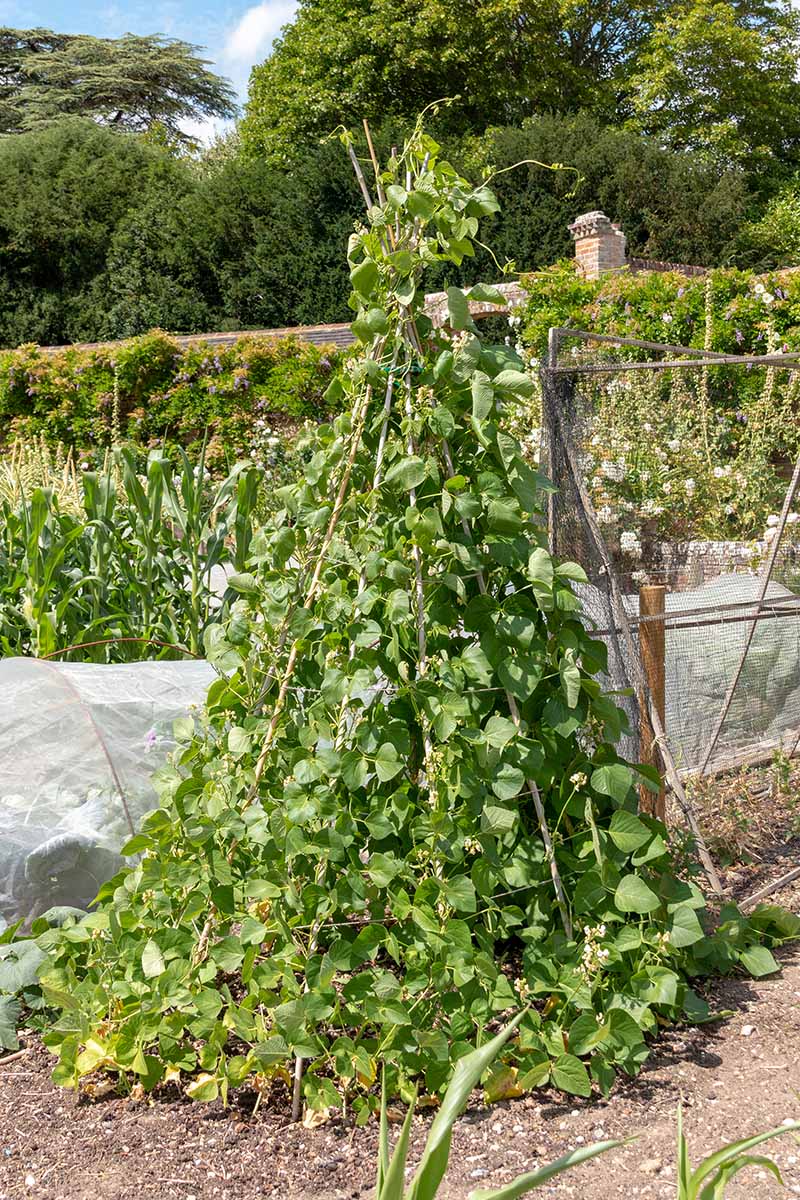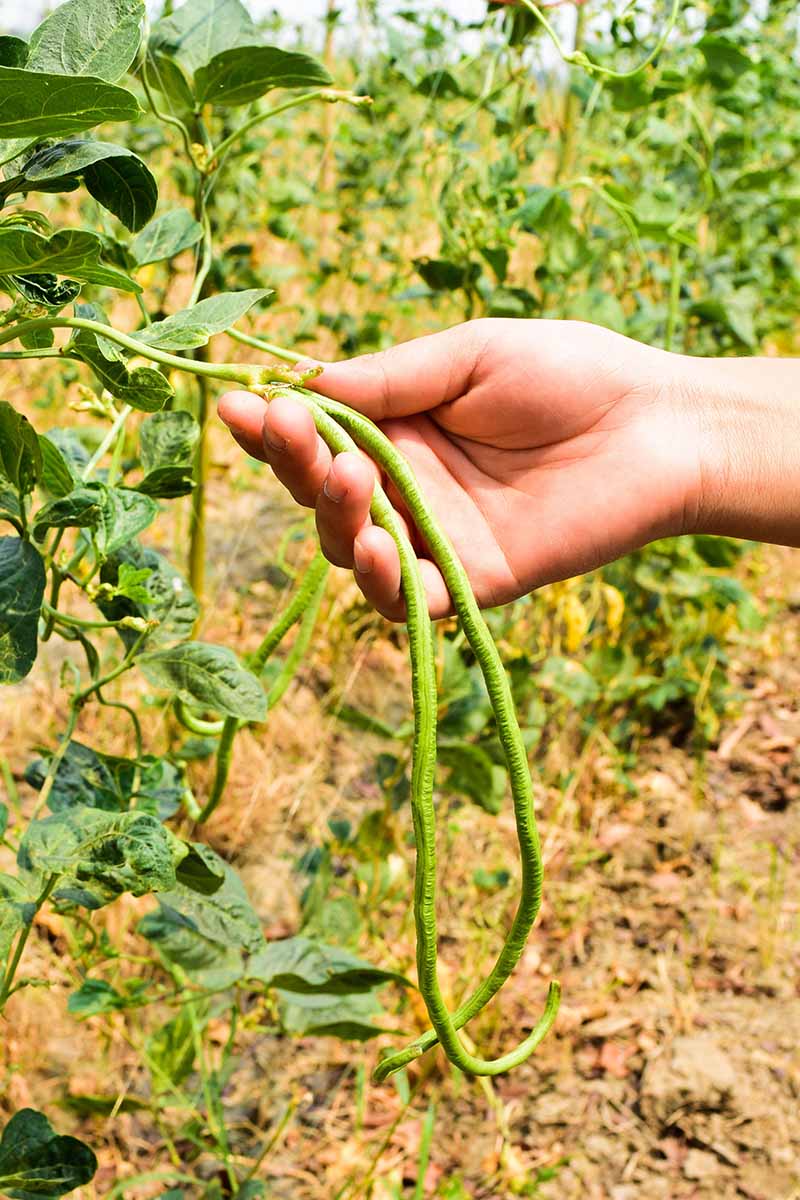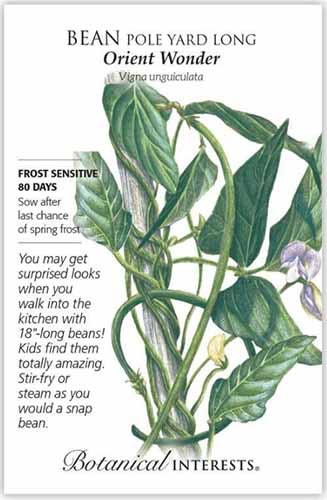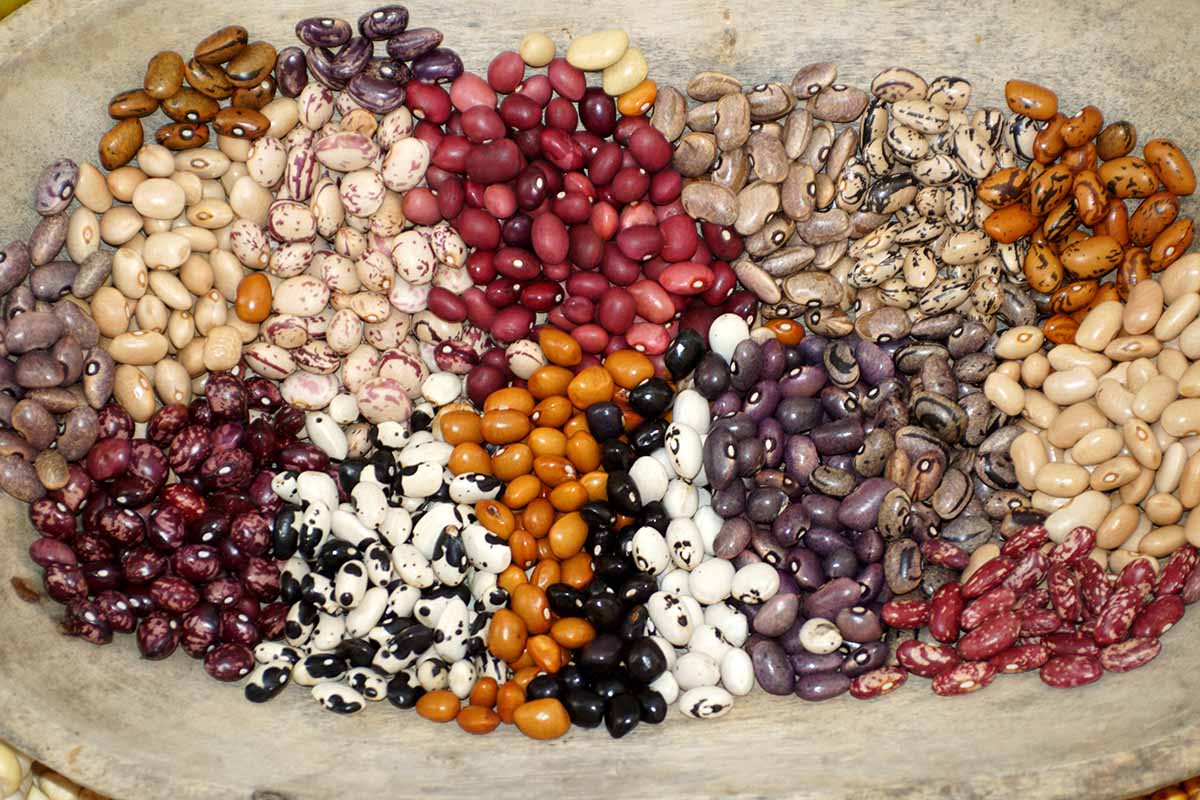Welcome to Beanland. Here in “Beanland,” we’re going to explore 13 different types of edible beans you might want to consider growing in your garden – not just cultivars, but different species and subspecies. But first, to get your frijole juices flowing, let’s look at a few reasons you might want to diversify your bean plantings, beyond the good, simple fun of it. We link to vendors to help you find relevant products. If you buy from one of our links, we may earn a commission. Just pick one from each species, and no more worry about cross pollination! (As long as you are far enough from any gardening neighbors, that is.) Another reason to diversify your plantings is related to climate. Since these species have different origins, each of them is best adapted to a different climate. Why try to grow a plant with high water needs in an arid location when you could more easily reap a bountiful harvest by choosing a well-adapted xeric selection? Yet another good excuse for more beans is that as legumes, they make excellent companion plants because of their ability to fix nitrogen from the air into the soil, reducing the need for fertilizer. You can learn more about this process in our article on the scientifically backed benefits of companion planting. And of course, there is the purely culinary motivation – having more options for plant-based protein in the kitchen! There are many more types of these legumes available than most of us are probably eating. In fact, there are around 40,000 different bean varieties preserved in gene banks! While a reference detailing the best – oh, I don’t know – 10,000 or so bean varieties would certainly be an interesting resource for those of us who are a tad legume-obsessed, for the purposes of this article we’re going to start with just 13 different edible bean species or subspecies to help you streamline the selection process. I’ll let you know what to expect from each of these so you can decide which ones are a good fit for both your climate and your available gardening space. I’ll also provide you with some ideas on how to use these in the kitchen, as well as tips on where to find seeds. Ready for a sneak peek? Here’s our list: Before we get started, let’s look at some terms commonly used to describe these legumes, since these are not restricted to any one species.
Bush Varieties
Bush varieties have a more compact growth habit, typically growing to about 18 to 24 inches tall. These low-growing types tend to have a determinate growth habit, like some types of tomatoes, and don’t produce long vines, but remain compact. You can learn more about growing bush beans in our article.
Pole Varieties
Unlike bush varieties, which tend to stop growing at about two feet tall, pole varieties are only limited by the length of the growing season, and their vines can reach several feet long. Without trellising, these varieties will be difficult to harvest, with their vines turning into a tangled mess. For those wishing to maximize their vertical growing space, pole cultivars help to grow the garden upwards.
Pulses
The term “pulse” is used when referring to certain types of edible legumes that are dried for food use. These include beans, but also peas (such as split peas), and lentils.
Seeds
Those who have never propagated beans before may not realize exactly how this crop starts out in the garden patch! No shame if you find yourself in that group – every gardener was a newbie at one time. The seeds used to grow these legumes are – dry beans, in fact! Bean seeds are found inside the bean pod.
Shelling Varieties
Shelling varieties have pods that are too fibrous to eat and are instead removed or “shelled” from their pods. Some “shellies,” as they are sometimes called, can be removed while still green and eaten fresh. On the other hand, some shelling varieties are allowed to fully mature and dry on the plant. Once the seeds are dry, they can be easily stored as a pantry staple to eat later. Or to grow more plants next year! Some varieties are dual purpose and can be either eaten fresh, like green beans, or allowed to mature and dry. While green beans – both bush and pole – tend to be frequently planted as garden staples, the shelling variety is not grown quite as frequently these days. That’s a shame because there is an incredible wealth of beautifully patterned (and tasty!) varieties to choose from. Now, without further ado, let’s get down to our main bean business.
1. Adzuki
Adzukis, classified scientifically as Vigna angularis, are tasty round legumes that are more widely used in Asia than in North America. An important food crop in Japan, adzukis are also used in traditional Chinese medicine. V. angularis has a native range that stretches from Assam in India through China, and to Japan, Taiwan, and Vietnam. Also known as “azuki” and “adanka,” this legume is a warm-season crop. Plants grow to one to two feet tall, usually take on a bushy growth habit, have moderate drought resistance, and perform best in climates with cool nights. Adzuki plants produce bright yellow flowers that give way to short, cylindrical pods. Inside the pods, seeds are round and can come in different colors depending on the cultivar, but are most often burgundy adorned with a small white line. Young pods can be harvested and cooked green, or pods can be left on the plants to mature for a harvest of dry seeds. Count on 80 days to maturity for fresh use, or 120 days for dry use. However, be aware that these plants, though bushy, are indeterminate, so not all pods will ripen at once. This legume is also known as “green gram” and “golden gram,” while in the US it was formerly known as the “Chickasaw pea.” When dry, adzukis can be cooked like other dried pulses – they can be used in soups, or served as a variation of the classic beans and rice combo. Adzukis are commonly used to make red bean paste in Asia, which is used as an ingredient in sweets such as sticky rice cakes. The seeds of this legume can also be used to make sprouts. Want to learn how to make your own sprouts? Read our guide to sprouting at our sister site, Foodal. Gardeners who would like to try this legume in their home gardens should be aware that adzuki varieties aren’t widely available for purchase among US seed purveyors. Dainagon Adzuki If you’d like to give growing this legume a try, ‘Dainagon’ is an heirloom variety from the Kyoto prefecture in Japan. You can purchase ‘Dainagon’ seeds in an array of package sizes from True Leaf Market.
2. Common
Common beans are the ones you are likely the most familiar with – these encompass the legumes most often eaten as fresh green beans and also make up the majority of dry beans consumed in North America. Available in thousands of different cultivars, Phaseolus vulgaris is a species native to Central and South America. These plants are sensitive to frost and are grown as warm-season crops. Varieties of P. vulgaris are available with both bush and pole type growth habits, with varying pod lengths depending on the cultivar. For fresh eating, common beans typically have green pods, but some varieties are yellow- or purple-podded. Flower color and seed color can vary depending on the cultivar. Varieties with flattened pods are typically called “Romanos,” and are available in both bush and pole varieties. Fresh green beans can be cooked in a multitude of ways – from casseroles to stir fries, to refreshing summer salads. If you need even more ideas, head to our sister site Foodal for a wealth of green bean recipes. One of the classic bush cultivars you can grow in your garden for fresh eating is ‘Tavera,’ a filet type that produces slim, tender pods measuring four to five inches long. ‘Tavera’ You can find packets of 60 seeds available for purchase at Botanical Interests. There are so many incredible varieties of P. vulgaris with a bush growth habit. If you’d like to dig deeper into these cultivars, be sure to check out our article on 35 of the best bush bean varieties. And if you are a grower with trellising at the ready, you might want to consider a pole variety. ‘Kentucky Wonder’ is an heirloom pole cultivar that produces five- to seven-foot-long vines, bearing green pods that are seven to nine inches long. ‘Kentucky Wonder’ Heirloom You can purchase ‘Kentucky Wonder’ in packs containing 40 seeds at Botanical Interests. Finally, let’s consider shelling cultivars. Some types of P. vulgaris used for dry shelling include cranberry, black, kidney, navy, and pinto beans – but those are only some of the most well-known. The varieties of dry shelling beans available to the home gardener are thrillingly vast! Dry common beans are a long-keeping pantry staple and can be cooked and used in soups, stews, dips, and salads, or they can be paired with rice or wrapped in tortillas. If you really want to indulge your taste buds in a Tex-Mex or Mexican-inspired meal, check out this recipe for stacked vegetable enchiladas from our sister site, Foodal. ‘Borlotto’ is an heirloom variety that produces dark pink pods streaked with white, containing large cream-colored seeds flecked with red. They are also referred to by the plural form of their Italian name, “borlotti,” and by the name “cranberry beans.” Available as either a pole or bush variety, ‘Borlotto’ has a tough pod, so the seeds are removed and cooked fresh, or the pods can be left on the plant to dry. Maturing in 70 days, plants reach two feet tall. Each pod contains five to six seeds. ‘Borlotto’ Heirloom Bush Bean You can purchase bush ‘Borlotto’ seeds in an assortment of package sizes via Eden Brothers.
3. Cowpeas
Despite what their common name “cowpeas” implies, Vigna unguiculata are not actually peas, but beans. Also known as “southern field peas” or simply “southern peas,” cowpeas are native to the majority of the African continent. Pods are cylindrical in shape and are held on the tops of plants, making harvesting easy. Compared to the common bean, this warm-season crop is more tolerant of heat, humidity, and drought. Cowpea cultivars can have either a bushy or vining growth habit, with most varieties reaching two to three feet tall, and producing flowers that are white, purple, or pale yellow. Pods can reach eight to 12 inches in length. These legumes can be harvested young when the entire pods can be eaten, or they can be left to dry on the plant and used for shelling. Fresh cowpeas in their pods can be prepared like green beans, while dry cowpeas can be cooked and used in soups, stews, fritters, salads, or combined with grains such as rice or millet. The most well-known variety of cowpea in the US is the black-eyed pea, which is a subspecies classified as Vigna unguiculata subsp. unguiculata. ‘California Blackeye #5’ is a black-eyed pea variety that has six- to eight-inch-long pods, containing cream-colored seeds with black “eyes.” Semi-spreading plants are resistant to wilt and root-knot nematodes, reach 14 to 18 inches tall, and require 60 days for fresh pods or 75 days for dry shelling. ‘California Blackeye #5’ Seeds You’ll find ‘California Blackeye #5’ bush cowpeas available for purchase in packs of 100 at Botanical Interests. Ready to learn to grow your own crop of black-eyed peas? Check out our article. Another famous variety of cowpea is the purple hull pea. These are also called “crowder peas,” because the seeds are packed so tightly within the pods. ‘Pinkeye Purple Hull’ is a variety of bush cowpea that has purple pods and seeds with a pink “eye.” Plants reach 24 inches tall and bear pods that are six inches long. Expect fresh peas ready to harvest in 62 days, or leave the pods on the plants for 90 days for dry cowpeas. ‘Pinkeye Purple Hull’ Southern Cowpeas You’ll find ‘Pinkeye Purple Hull’ southern cowpea seeds available for purchase in packs of 100 at Botanical Interests.
4. Fava
Favas, also known as “faba” or “broad beans,” are a cool-season legume. Native to Afghanistan and Iran, Vicia faba can be grown as a winter crop for those in southern climates, and as a spring crop in more northern areas. Fava plants have an upright growth habit, with large compound leaves and striking flowers that are white with large purple spots. The entire pod is edible when picked young, but as the seeds mature, pods become tough. Seeds can be enjoyed fresh and green, or pods can be allowed to dry on the plant, and the favas can then be dried for longer term storage. Depending on the cultivar, plants can reach between two and six feet tall, and seeds can be small or up to an inch long, with pods containing one to five seeds each. Although these legumes are edible, they are often used as a nitrogen-fixing cover crop – and they can also be used in permaculture fruit guilds. Favas do best in silty loam soil and require good drainage, maturing in 75 to 100 days, depending on the variety. One of my favorite uses for favas is the classic Mediterranean dish, ful medames, wherein the earthy flavor of these dried legumes is combined with lush olive oil and bright lemon juice. But green favas are just as flavorful. For an idea of what you can do with these fresh legumes, check out this recipe for roasted poblano and fava fettuccine at our sister site, Foodal. An advantage of producing your own crop is that favas can also be enjoyed for their edible greens. Ready to grow your own? There are many different fava cultivars, including the hard to find horse bean. You can learn more about this ancient heirloom variety in our article on growing horse beans. (coming soon!) A more accessible cultivar to start with is ‘Windsor,’ an heirloom English cultivar that will be ready to harvest in 75 days. Pods are five to six inches long, containing three to five one-inch seeds each. ‘Windsor’ Fava You’ll find ‘Windsor’ favas available for purchase in packs of 18 seeds at Botanical Interests. Learn more about growing favas in our complete guide.
5. Garbanzo
Garbanzos, also known as “chickpeas,” are a cool-season crop native to Iran and Iraq. Classified as Cicer arietinum, this legume grows best in sandy or silty loam soils and requires good drainage. Its long taproot provides it with moderate drought tolerance, and it actually performs best in areas with less rainfall. Flowers are purple, pink, blue, or white, and the leaves, flowers, and pods of the plant are hairy. Each pod contains a single seed, and foliage can be simple or compound. Plants have a spreading but compact growth habit, usually reaching no more than 30 inches tall and wide. Count on 80 days to maturity for fresh, green garbanzos, and 100 days for dry. Garbanzos can be eaten green and fresh, though you’ll most often encounter them as mature, beige or tan-colored seeds, cooked and used in soups or salads. Or, in the ubiquitous and utterly delicious spread or dip known as – that’s right, say it with me, kids – hummus. Homemade hummus is even better than the store-bought stuff, and when you make it with homegrown garbanzos, it’s even more satisfying. To make your own homemade garbanzo dip, check out this delicious recipe for roasted garlic hummus. You can find it on Foodal. Want to try cultivating your own source of hummus at home? Garbanzo seeds aren’t the easiest to source among seed sellers but there are some specialty growers out there that carry them. Look for cultivars such as ‘Golden Dragon’ or ‘Black Sicilian.’ Garbanzo Learn more about growing garbanzos in our complete guide. (coming soon!)
6. Lima
Limas might be the bean that many people love to hate – and if that’s true in your case, I’m hoping you’ll give them a second chance. Not all limas have the mealy texture that some find off-putting. Plus, limas are really just another name for butter beans – now doesn’t that sound better already? Classified as P. lunatus, this legume is a warm-season crop that comes in many different manifestations than the type you’ll find in the frozen section of the grocery store. To start with, there are two sub-types of limas – large limas, which originated in the Andes region of South America, and baby limas, which are more heat tolerant and originated in Central America. Available in either bush cultivars or pole varieties, lima plants produce white or yellow flowers. Pod size and the number of seeds per pod will vary depending on the cultivar you choose. Short-season gardeners would do well to choose bush varieties, which can mature in as little as 60 days, while those with longer growing seasons might try pole cultivars, which can require up to 100 days to reach maturity. Limas perform best in soil that is loose and well-draining. To learn more about growing these legumes, check out our article on growing and caring for lima and butter beans. This legume is harvested either fresh or dry, and in both cases the pods are discarded and only the seeds are used for food. In the kitchen, dried limas can replace nearly any type of white bean a recipe calls for. I like them best served up with some braised greens, such as broccoli rabe, and a little garlic and olive oil. And my favorite variety to serve this way is without a doubt the ‘Christmas’ cultivar. ‘Christmas’ limas have beautiful red and white mottled seeds that cook up to a meaty texture. That’s right, I said “meaty,” not “mealy.” ‘Christmas’ is an heirloom pole variety that requires 75 to 85 days to maturity. ‘Christmas’ Lima And you don’t have to be content with my personal favorite alone – there are many other lima cultivars you’ll want to learn about. Discover 13 of the best lima and butter bean cultivars in our article.
7. Mung
Mung beans are a warm-season crop, and they’re closely related to cowpeas and adzukis. Vigna radiata has a widespread native range, spreading from the Arabian peninsula to India and all the way to eastern Asia and Australia. With many different varieties, mungs are available in both bush and pole types. Bush types reach 24 to 36 inches tall while vining types may reach six feet tall. Flowers are yellow, giving way to pods that are usually three to four inches long, containing 10 to 15 seeds each. The seeds are green, brown, or yellow, depending on the variety. The plants grow well in sandy loam soils and dry conditions, making this a good option for those in more arid locations, and require 90 to 120 days to reach maturity. Even if you don’t realize it, you may have eaten mungs before – they are frequently found in the form of sprouts used in Asian-style stir fries or summer rolls. But their culinary uses go well beyond mere sprouting. Pods can be picked young and tender to use as a green vegetable or they can be allowed to mature for dry seed. Dry mungs can be cooked and used as a substitute for chickpeas in hummus, or they can be used in dishes such as ginisang munggo, a Filipino stew. While garden seeds for this species are hard to come by, enterprising growers might try using seeds designated for sprouting to grow a garden crop.
8. Pigeon Peas
Pigeon peas are a warm-season crop that can be used much like southern peas in the kitchen, but have an added benefit in zones where they can be grown as perennials – they can grow into a hedge. These legumes require a long growing season. Classified as Cajanus cajan and also called “no eye pea,” “Congo pea,” and “red gram,” pigeon peas are native to India. Tolerant of heat, drought, and poor soils, this legume can be grown as a short-lived perennial in USDA Hardiness Zones 9 to 12, where it can reach up to 12 feet tall. Flowers are yellow or yellow and red, giving way to pods that contain an average of five or six seeds each. Both pods and seeds are edible, and the seeds can be used fresh or allowed to dry for storage. As an annual, pigeon peas require 90 to 130 days to reach maturity. You can learn more about growing and caring for pigeon peas in our article. Pigeon peas have a sweet, nutty flavor. Traditionally they are used in the Indian dish toor dal, but can also be used in any way you would use pulses such as lentils or split peas. When choosing a variety to grow in your garden, make sure to choose a cultivar adapted to your needs – whether that means an annual crop or a perennial hedge. Pigeon Peas
9. Runner
With their striking flowers, runner beans are edible legumes that double as ornamentals. P. coccineus is native to mountainous regions of Central America and it’s highly attractive to pollinators such as hummingbirds, bumblebees, and butterflies. Runner beans are a warm-season crop, but hailing from higher elevations, they are both more cold tolerant and less heat tolerant than common beans. P. coccineus is a short-lived perennial in Zones 7 to 11. In colder zones it’s grown as an annual, though its tubers can be lifted at the end of the growing season and overwintered. While there are a few compact varieties, most plants produce vines that can grow from six to 15 feet in length and require trellising. The foliage on runners doesn’t look much different from pole varieties of P. vulgaris – leaves are compound with three heart-shaped leaflets. Flowers are borne in clusters and range in color from white to pink to red depending on the cultivar, with red varieties being the most widely grown. Fuzzy pods are long and flat, containing six to 10 seeds each. Want to learn more about growing runner beans? Check out our article. (coming soon!) For fresh eating, pick pods at four to six inches. Or let them mature for shelling, when pods can reach up to 12 inches long. In the kitchen, runner beans can easily be substituted for their look-alikes, Romanos, when they’re still young and tender. Mature seeds can be cooked and used in soups and stews, or served with rice. The flowers and young leaves of this species are also edible. When choosing a cultivar, I always go with the hummingbird pleasers – the ones with the red blooms. ‘Scarlet Emperor’ will bring these tiny birds calling. It has bright red flowers and matures in 75 days. ‘Scarlet Emperor’ You’ll find ‘Scarlet Emperor’ available for purchase in packs of 20 seeds at Botanical Interests.
10. Soy (Edamame)
While you may think of soybeans as a large-scale agricultural crop, they can also be grown in the home garden – particularly in the form of edamame, soybeans that are picked and enjoyed green rather than being allowed to dry. Glycine max is the scientific name for this food crop, which originated in Asia and is used to create such culinary staples as tofu, soy milk, and soy sauce. Also known as “vegetable soybean,” edamame is a warm-season crop whose plants reach 14 to 36 inches tall with white, yellow, or purple flowers, and compound leaves with oval leaflets. Pods are usually hairy and contain two to four seeds each, maturing in 60 to 150 days, depending on the variety. Edamame, the green seeds harvested from unripe pods, are widely enjoyed as a snack, either fresh or dehydrated. They can also be used in stir fries, noodle dishes, or soups. Or they can take a starring role in deconstructed sushi, such as in this recipe from Foodal for a sushi bowl with sriracha mayonnaise.. There are many different cultivars of edamame available – be sure to choose one that is well-adapted to the length of your growing season, since these legumes are daylight sensitive. ‘Chiba Green’ is an early-maturing variety, with pods ready to harvest in 60 to 70 days. ‘Chiba Green’ Edamame You’ll find ‘Chiba Green’ edamame available for purchase in packs of 29 seeds at Botanical Interests.
11. Tepary
Live in a hot and dry climate? You might want to try tepary beans. These legumes are considered one of the most heat tolerant crops in the world, able to produce a harvest at temperatures as high as 110°F. P. acutifolius is native to Arizona, New Mexico, Texas, and Mexico, where it was domesticated at least 2,500 years ago. Its seeds were an important crop to various Native American peoples of the Southwest deserts, notably the Tohono O’odham. While the wild forms of the species are often vining, domesticated plants tend to be bushier and more compact, reaching about 12 to 30 inches tall. This warm-season legume, also called “tepari,” “pavi,” and “haricot riz,” has compound leaves made up of three ovate leaflets. Plants produce flowers that are white to pink, followed by slightly hairy pods that grow up to three inches long, containing two to seven seeds. Seeds vary in color, ranging from white, beige, golden, brown, or black, to mottled colors. Tolerant of heat, drought, and alkaline soils, haricot riz are not tolerant of regular watering. After an initial watering at planting time, they should only be irrigated if they show signs of drought stress. These legumes can be used as a summer cover crop in drought-prone areas. Count on a harvest after 60 to 120 days. In the kitchen, teparies can be used like other dry pulses, in soups and stews, or you might take a cue from one of their ancestral uses and try them as ground meal. Want to grow your own? Black Tepary
12. Winged
Winged beans look like legumes you might find in a Dr. Seuss book. Or perhaps on another planet! Native to Tanzania, Psophocarpus tetragonolobus goes by many different monikers. Some of the most commonly used are “Goa beans,” and “princess beans.” Winged beans hail from the tropics and thus need a warm season in which to grow. Vining plants produce beautiful blue flowers that are followed by green or purple pods. These unique pods have four “wings” running lengthwise along them, giving them their most commonly used name. Pods can grow up to nine inches long but are best harvested a bit smaller, at four to six inches for fresh eating. Larger pods will become fibrous but can be shelled and the seeds enjoyed like soybeans. These plants are tolerant of heat, humidity, and heavy rainfall – and are quite resistant to pest and disease pressure. For more tips on how to care for these in the garden, be sure to check out our guide to growing winged beans. (coming soon!) Immature pods can be eaten raw but mature seeds should be cooked before eating. Along with their edible pods, all of the other parts of the plant are edible as well, including the plant’s tuberous roots. The raw pods have a flavor similar to that of asparagus, giving this plant one of its other common names, “asparagus peas.” Wondering how you might use these legumes in a meal? Try using the fresh pods as a fun substitute for green beans in Asian-style meals, such as this recipe for fried tofu with charred green bean salad. Find it on Foodal. Many varieties are daylight sensitive and will only produce flowers – and thus, pods – during short days. When growing this crop in non-tropical areas of the US, look for day-neutral varieties such as ‘Urizun Japanese’ or ‘Hunan.’ Winged Beans
13. Yard-Long
If you are enchanted by particularly long-podded types of P. vulgaris, there’s another type of legume you might enjoy growing – the yard-long bean. It may be one of the most unusual veggies you can grow in your backyard! This legume was formerly classified as its own species, Vigna sesquipedalis, but is now considered to be a subspecies of the cowpea, V. unguiculata ssp. sesquipedalis. Native to Ethiopia and Kenya, this legume may be a subspecies of the cowpea, but it deserves its own section in this article due to its astonishing pods. Also known as the “Chinese longbean” or “asparagus bean,” this warm-season crop is heat tolerant – but its most outstanding feature (apart from its flavor!) is the length of its beans. Grown for a harvest of fresh pods, the common name “yard-long” is no exaggeration – some cultivars have pods that can reach up to four feet in length! Varieties of this legume are vining and can grow extensively, reaching up to 12 feet long, so don’t forget to install your trellis at planting time. Plants produce white or purple flowers, transforming into pods that range in length from 18 inches long to over three feet in length. These long, thin legumes are ready to harvest in 80 to 90 days. If you miss your harvest window and the pods become overly fibrous, you can use the seeds as you would cowpea seeds, by either shelling the fresh seeds or allowing the pods to mature on the vine and using them dry. But picking them fresh will give you the most bang for your buck. These can be used just like green beans, but their flavor is a bit different than standard haricots verts. I think of their subtle, intriguing flavor as less beany than green beans, with hints of nuttiness and dill. In the middle of summer, there are few things I enjoy eating more than a plateful of steamed yard-longs without any garnish at all, not even salt. ‘Orient Wonder’ is a yard-long variety that stands up well to unpredictable weather and is best picked when pods are a foot to a foot and a half long. ‘Orient Wonder’ You’ll find ‘Orient Wonder’ yard-long beans available for purchase in packs of 20 seeds at Botanical Interests.
A Beantastic Voyage
Congratulations! You’re now an honorary citizen of Beanland! No doubt you have a species or two picked out that will thrive in your particular gardening conditions and delight your taste buds – allowing you to embark on a bean-themed gardening adventure of your own creation! Okay, beansters, now it’s your turn – what are your favorite types, species, or cultivars of beans? Did you discover any new ones that you are just itching to try out? Let us know in the comments section below. But wait, there’s more! Here are a few more articles to inspire and guide you in cultivating useful nitrogen-fixing legumes in your yard and garden:
How to Plant and Grow Snow PeasHealthy and Tasty: How to Grow Alfalfa Sprouts and Microgreens at HomeHow to Grow Hyacinth Bean Vines

